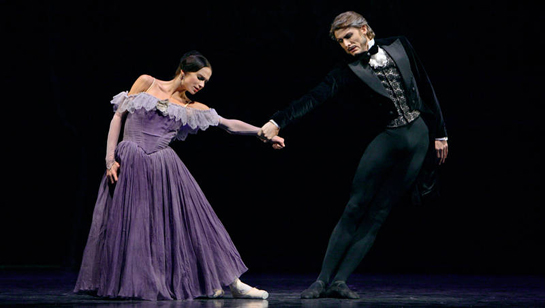 When it comes to ballet, I’m a beginner. I can’t pirouette, prance or go ‘en pointe’. In fact, until recently I hadn’t even seen a single performance.
When it comes to ballet, I’m a beginner. I can’t pirouette, prance or go ‘en pointe’. In fact, until recently I hadn’t even seen a single performance.
It was slightly daunting, therefore, to take a trip with ECLA to see Tchaikovsky’s Onegin, a ballet whose name I can’t even pronounce. But for a nominal fee I had the opportunity to adopt ‘first position’ in the learning process with fellow students – such are the benefits of ECLA.
Oh, and one of our Ukrainian students was able to enlighten me as to the pronunciation (‘on-aay-gin’ was the best compromise between English and Russian we could manage). Again, such are the benefits of ECLA.
In all honesty, it did take me a while to adjust. This isn’t surprising, considering that my initial reaction to ballerinas on their tiptoes is to ask myself why they didn’t just get taller dancers in the first place. A few technical difficulties (including the classically unfortunate mistimed gunshot sound) didn’t help with the suspension of disbelief, either.
However, the melodrama definitely helped me to engage. The ballet, based on Alexander Pushkin’s poem Eugene Onegin, is a story of love, death, and regret. Onegin, our instigator, is admired by Tatyana, but instead decides to pursue her younger sister, Olga… who also just happens to be engaged to his best friend, Lensky.
Driven to despair by the flirtation between his fiancée and best friend, Lensky challenges Onegin to a duel, and, in a particularly heart-wrenching scene, is shot dead. With a twist of fate that only a ballet or opera would be audacious enough to contrive, Onegin later decides to fall in love with Tatyana, who is now married and ultimately refuses Onegin. All very frustrating.
In the midst of these convoluted twists and turns, though, a couple of scenes really stood out. During the third act, for example, we see Onegin, reintroduced to Tatyana three years after the duel, practically drifting through lines of happily united couples at a ball as he looks on at Tatyana and her husband taking centre stage.
Onegin’s entirely black attire creates a sharp contrast to the sea of graciously-moving white, and his sudden failure to articulate himself physically sets the emotional tone.
And in fact, the movements did become easier to read, and towards the end I felt that I was beginning to get ballet a little more. I started to develop a sense of when the bodies seemed too close to each other or too far, or when the movements seemed too unnatural.
Of course, I also began to appreciate the smoothness with which they moved and the lightness with which they landed (and even the standing on tiptoes seemed to make more sense by the end).
Apparently the rest of the audience thought so too, as the show culminated with numerous bunches of flowers being thrown at the dancers as they took their bows; something I’d only seen before in films, but an act that certainly fit with the spectacle of such a melodramatic storyline and, for myself, a newly-discovered art-form.
by Zac Barnett (1st Year BA, UK)
